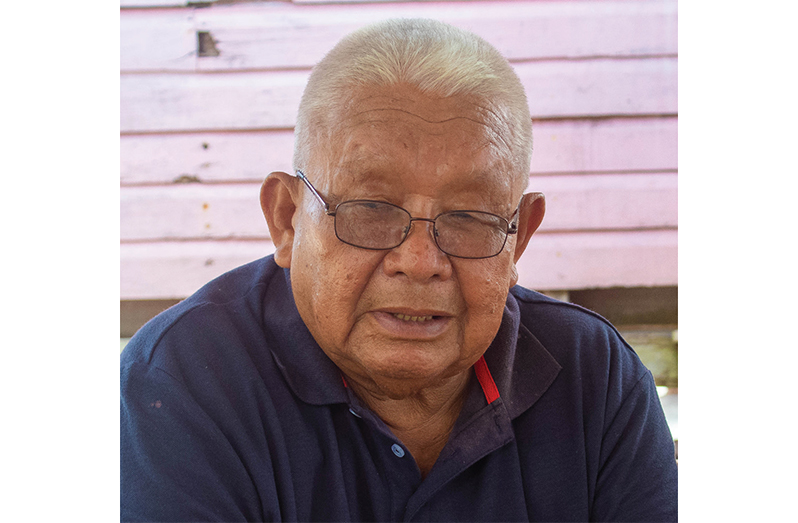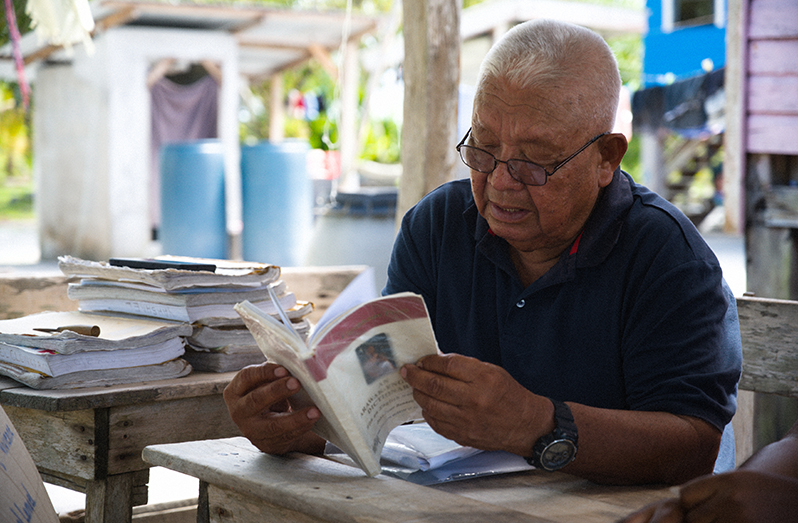Language and a sense of self
By Shaniya Harding
SECRET words and hidden messages passed among the tribe members. A code shared between people to ensure their safety from outsiders. This is what Leeland Clenkian calls language. The words spoken create and craft a unique sense of self and oneness among people.
Leeland is a former Toshao, a historian with a passion for linguistics and a man who loves his village. Leeland grew up as the oldest grandson in his family. He believes it was because of this that he was able to experience and learn an integral part of his heritage that he is now trying to teach others.
English and Arawak
One of the unique traits of our country’s Amerindian people is the amount of time they have graced the land of Guyana; that is what makes them indigenous. But it has also made it a hard task to hold on to certain cultural aspects in the face of adversities.
The tribes faced intervention from a wide variety of people, particularly Europeans. As Leeland explained, “We had a lot of teachers from the coast teaching us English. At the time, one or two teachers would have been guilty of saying you speak too much Arawak and you can’t learn this English properly.”

This idea was reinforced by many of the other people who came in contact with the Amerindians. Although, later in life, Leeland sought to teach himself the language his ancestors were deprived of. After years of learning English as a teacher and Arawak as an Amerindian, Leeland believes that the two can go side by side and hand in hand.
As Leeland stated, “The more you know, the better you’ll know your language. If you learn English well or to a certain degree you have a better understanding of Arawak. The reason being, there is the sense and the words there to make sentences out of it.” Leeland is a firm believer in the notion that although culture needs to be preserved, being knowledgeable about things outside of your culture, does not in any way ruin what you were taught inside of it.
Two bows on the string.
Leeland explained that the language of his people is in no way difficult to learn. Not because he has known it his entire life but because there are fewer words. And many of them are understood purely by the context of the conversation.
On the matter of the development of the Arawak tongue, Leeland stated that perhaps the language was left as simple as it was because it suited the way of life back then. As he stated, “Because of our simple life of gathering, fishing, hunting and subsistence farming, the language became a bit stagnant. There were no words being fashioned or creating new sentences.”
This fact, coupled with the knowledge he gained about other tribes in the world, inspired Leeland. “I began to read a lot of historical things. When I became a soldier, I read about world things in world war ll. The Navajos how they were used as signallers to help encode certain things.”

The sense of strength in secrecy finally pushed Leeland to begin actively learning the language he admittedly took for granted growing up. As Leeland expressed, “That kind of inspired me to get my own language. When you have another language up your sleeve, you have two bows on the string.”
Although they complement each other, the two languages are drastically different as Leeland explained. “One of the main differences is that our verb is understood. There is no word that we can call ‘is’ or ‘are’ or ‘were’. That part is strictly understood.” He goes on to say that in Arawak, there are words that mean almost the same as its English translation.
According to Leeland, words like ‘Moroco’ and ‘Bakalmando’ translate directly to ‘Good morning’ and ‘Good afternoon’ respectively. But the Arawak term for good day in English translates literally to “We have the sun’. The Arawak language is heavily based on context but, once understood alongside English, could be taught and learnt as simply as any other subject in schools.
Because of where and how he was brought up, Leeland always had the urge and passion to preserve certain pieces of information. Leeland and his father before him have chronicled the history of St Cuthbert’s Mission. Leeland today has a hand written outline of the major events and people that have crafted the village.
The mission started out as a small settlement of a few people, and then a couple families and it eventually bloomed into the place it is known as today. The names of various families have lived on, like the Shumans, the Clenkians, the Dundas and many others. With time and its intervention, many things in the mission have changed, everything except the people.



.jpg)








